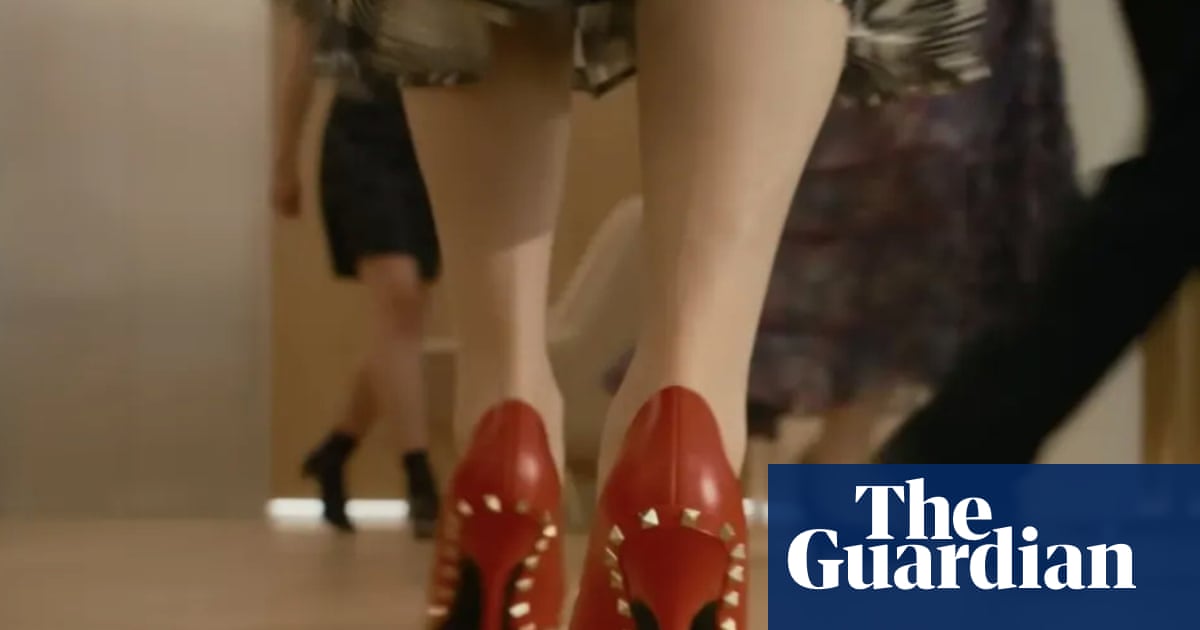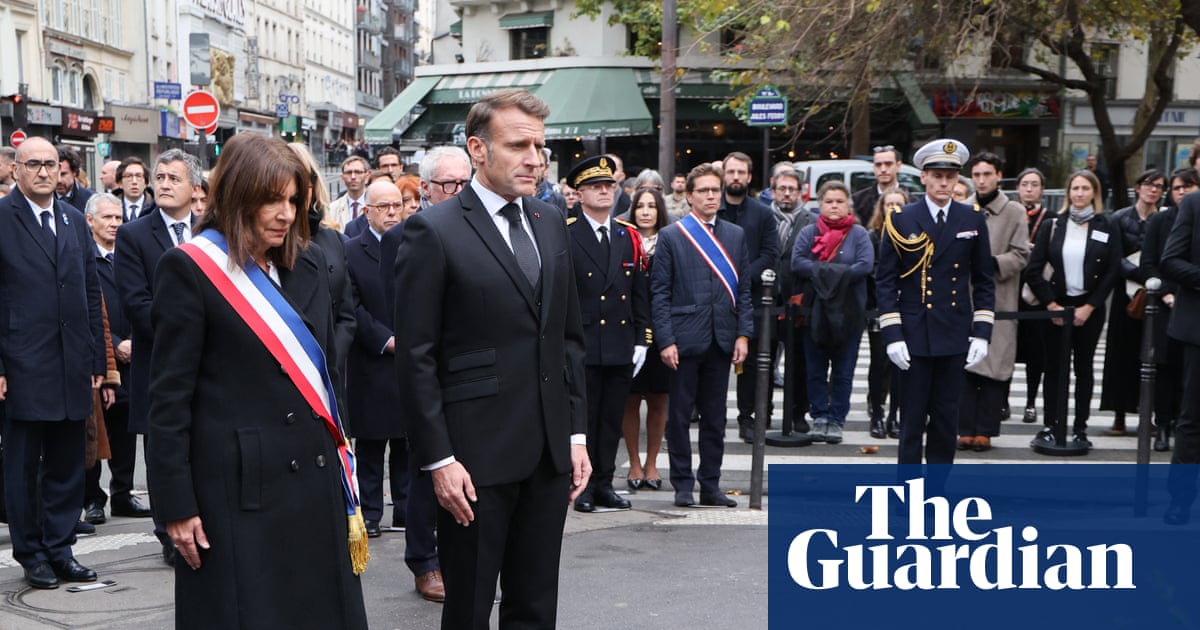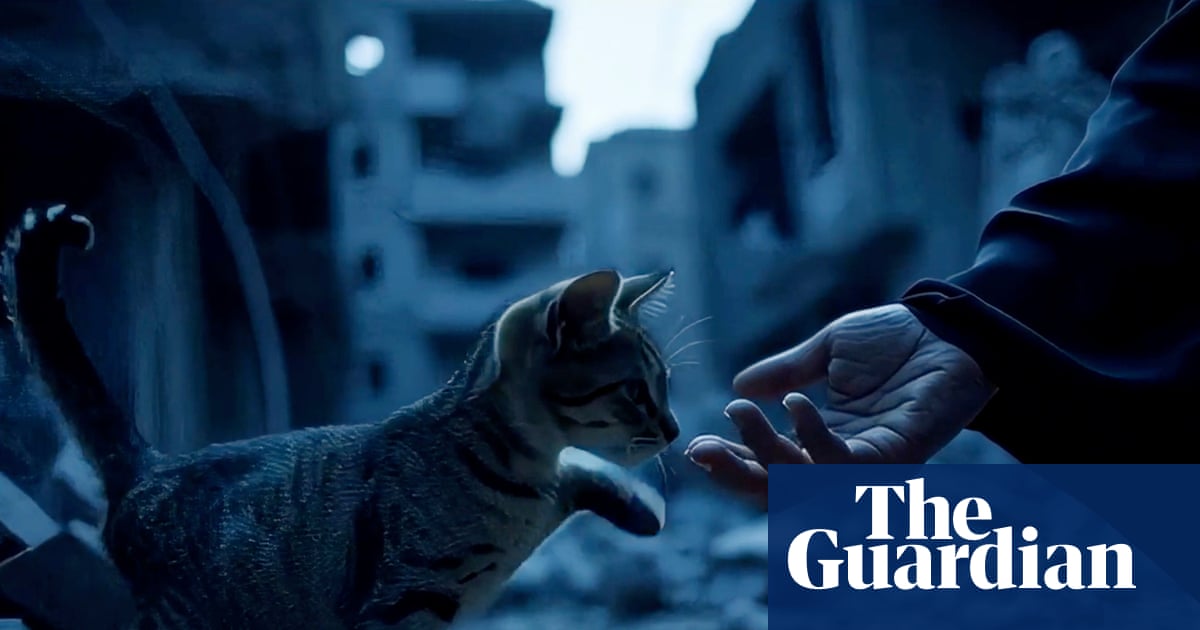How long is a piece of string? David Shrigley can’t answer that, but he can tell you how much it weighs: 10 tonnes, apparently. His latest installation is literally an exhibition of 10 tonnes of old rope, accumulated by him over months, and left in towering mounds in this swanky gallery in London’s Mayfair. Most of it is marine rope, destined for landfill. It’s hard to recycle this stuff, it seems, and there’s an endless supply of it dumped around the world. So Shrigley scooped up as much of it as he could find, piled it up and put a massive price tag on it.
The work can be yours for £1m. And that’s the point of the show: this is literally money for old rope. It’s not that deep – it’s just an idea taken to its logical conclusion, an idiom taken too far, a pun taken too literally.
Shrigley made his name with deadpan, easily intelligible, visual one-liners: simple paintings with simple phrases written across them, just a bunch of glum, self-deprecating but often funny non-sequiturs. And that’s exactly what this is, a non-sequitur, a joke with no punchline. Just an idea and a price tag.
And it looks great! Largely because it looks pretty much like any other conceptual art installation. Piles of discarded rubbish have been a common sight in art galleries for decades, but this is the first one to do it quite so sarcastically and knowingly. It’s like Shrigley is gamely admitting that, well, this is all a bit stupid.

The issue here is that, at its root, this is art about the value of art, about what people are willing to pay for an idea, about which ideas have value and which don’t. But I don’t think the financial value of art is all that interesting. Who cares if someone wants to pay millions for a dirty old bed, or a light going on and off or a rotten banana taped to a wall? What rich people do with their money is about as relevant to me as what they have for breakfast.
Making a snarky comment about the value of art in a gallery that’s struggling to survive financially (SFG announced some pretty huge losses earlier this year) does feel a bit awkward, too. It’s like Shrigley is saying: “You lot would buy any old crap, wouldn’t you?” Yet this is a gallery that’s having quite a hard time selling any old crap.
Maurizio Cattelan, the artist now famed for making a golden toilet that was stolen, made a similar point – in a more aesthetically impactful way – when he taped a banana to a wall at an art fair in 2019 and sold it for more money than anyone should ever spend on a banana. But that was then, when the art world was a lot more boomy. These days, when things are so much more cautious, I don’t think ideas about the financial value of art are as clearcut or obvious as they once were.
after newsletter promotion
Despite all this, in a very Shrigley way, the work is disarming and charming. Look at you, wandering around a fancy gallery trying to think deep thoughts about piles of rope. It’s obscene, ridiculous, funny. I want to pick it apart, untangle its conceptual threads and prove that they don’t weave into anything sensible – but obviously they don’t. The conceptual threads are just a big pile, a mess. Part of me wants to go all lyrical and describe the colours and fabrics, the smell, the history implied in each strand, the narratives of the hands that once pulled these ropes and yadda yadda yadda.
But I don’t think that’s the point. It really is just some old rope. And that’s kind of great.

 2 hours ago
3
2 hours ago
3

















































